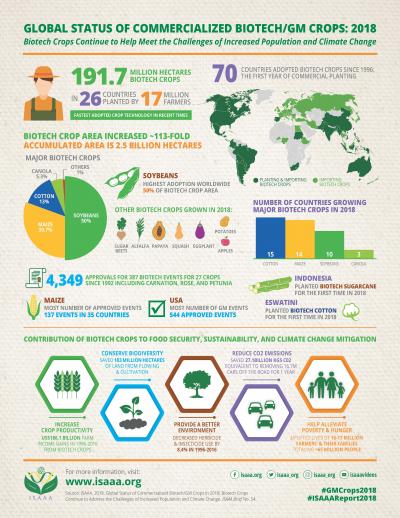What is a GMO?

By definition, a GMO, or genetically modified organism, is a plant, animal or another organism that has had its genetic makeup modified in order to produce a more desirable outcome, such as enhanced nutrition or a stronger resistance to disease.
So, what is GMO in simple terms? Essentially, it’s a more precise method of plant breeding that creates a product that cannot be achieved through traditional farming methods.
For more than 10,000 years, humans have used a variety of plant breeding techniques – such as selective breeding, mutagenesis or genetic engineering – to produce plants with more useful characteristics. Genetic engineering, or biotechnology, differs from other plant-breeding techniques because it enables specific, predictable changes to be made to the plant. Plant breeders are able to take a desirable trait found in nature and transfer this trait from one organism to another, therefore creating a stronger crop. For example, they can genetically modify a crop to be more resistant to disease or more tolerant to herbicides. Learn more basic GMO facts here.

Some examples of genetic improvements made to commercially available GMO crops are:
- Insect resistance: to provide farmers with season-long protection against pests, reduce the need for pesticide applications and lower input costs.
- Drought tolerance: to increase water retention and allow crops to better endure drought conditions without the need for additional irrigation.
- Herbicide tolerance: to allow farmers to fight weeds by applying targeted herbicides only when needed and enable them to use conservation tillage production methods that preserve topsoil, prevent erosion and reduce carbon emissions.
- Disease resistance: to enable plants to resist certain diseases, such as the papaya ringspot virus (PRSV). For example, the GM Rainbow Papaya (developed to resist PRSV) allowed Hawaiian papaya farmers to recover when the devastating disease crippled their industry.
- Enhanced nutritional content: to create food – such as soybeans – with an enhanced oil profile to make them longer-lasting and trans-fat free.
- Reduced food waste: to eliminate superficial browning and bruising when products are cut or handled – in potatoes, for example – to reduce the amount of produce thrown away by producers, processors, retailers, and consumers.
- Improved manufacturing processes: to enable more efficient biofuel production – in certain corn varieties, for example – by improving the process by which cellulose and/or starch is broken down and converted to fuel. This helps to reduce the environmental impact by decreasing the amount of water, electricity and natural gas needed to produce biofuel.
Many of these GMOs are used to feed livestock or as processed ingredients in food products found in your local grocery store – such as sugar or corn starch. Only papaya, potatoes, squash, sweet corn and apples may be available in your store’s produce aisle.
Learn more about the different methods of crop breeding here.


